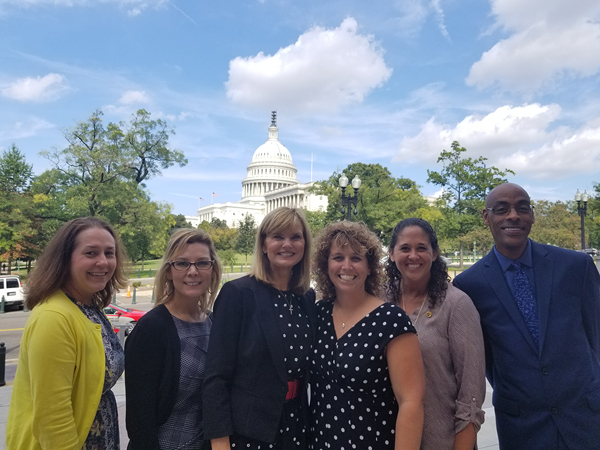NIET Educators to Policymakers: 5 Keys to Closing the Achievement Gap
December 4, 2018

Six educators traveled to Washington, D.C., in October to share their experiences and perspectives on how to support high-need students to excel. The group included teacher leaders and school leaders from New Orleans, the San Antonio area, northwest Indiana, south central Iowa, the Cumberland Gap in Tennessee and northwest Louisiana.
All of them shared stories about the nature of the challenges facing students in their schools: the dramatic increase in students living in poverty, the growing percentage of English Language Learners, and the number of students facing acute social and emotional challenges due to mental illness or drug addiction of a parent. These challenges were shared across urban, small town and rural communities.
Yet even as they described the increasing social and emotional needs that students are bringing to school, they all provided evidence of measurable academic growth and closing of achievement gaps. For example, teacher leader Aimee Schade described how West Goshen Elementary in Goshen, Indiana, improved from a D to an A over the course of four years, and sustained an A rating even as standards rose in the state. More than 75 percent of West Goshen's students live in poverty and 43 percent are English Learners.
At New Orleans' Alice Harte Charter School—serving a high-poverty, 95-percent minority student body—School Head Robert Hill told the story of his students reaching an A rating on the state system. As one of the first schools to reopen after Hurricane Katrina, Harte faced severe social/emotional challenges as well as academic ones.
Principal Amy Whittington from Central Decatur Elementary School in Iowa and Principal Tracy Padilla from Somerset Elementary School outside San Antonio, Texas, shared similar stories of academic growth and achievement. Somerset has made impressive growth with English Language Learners and special needs students. Central Decatur has steadily increased achievement for all subgroups of students.

Source: DeSoto Parish Schools
Executive Master Teacher Nicole Bolen from DeSoto Parish Schools, Louisiana. described how the district improved from 45th in the state to 14th in four years, doubling the number of gifted students, increasing scores for economically disadvantaged students and becoming the fastest-improving district in the state on the ACT exam. 2017 end-of-course exams in high school showed DeSoto's passing rates for multiple subgroups exceeding those for the state.
Assistant Principal Mary Gilbert from Manchester City Schools, Tennessee, described how her school, College Street Elementary, has increased teacher retention, teacher skill development and student academic achievement.
Despite their highly diverse communities and geographical settings, five common themes stood out across the group.
- The importance of adopting clear, detailed and student-centered descriptions of strong classroom instructional practices. Whether adopted as teaching standards or as an instructional rubric for purposes of observation and feedback, the power of developing a common language around good instruction was a key foundation for improvements in teaching and learning.
- The importance of creating structure, purpose and leadership for weekly collaborative professional learning communities (PLCs). Educators in the group had all experienced ineffective collaborative groups that were largely unplanned and lacked a clear agenda or outcome. They each emphasized the importance of making specific student-centered strategies tied to student needs and data, and tested to ensure they worked with students in that school an essential part of collaborative teams. Teams were also successful when they had a designated leader responsible for planning and ensuring outcomes were achieved.
- Each successful school used trained, instructionally focused teacher leaders to create intentional, well-planned PLCs with a purpose, a field-tested strategy, and planned follow-up coaching for teachers in their own classroom. Teacher leaders also observed and provided individualized feedback and follow-up support for every teacher. Release time for teacher leaders to conduct these activities and additional compensation for these roles were a part of each school's plan.
- School leaders created leadership teams that included teacher leaders in order to expand the quality and quantity of instructional support and expertise, including analyzing data and developing goals at the school, grade and classroom level.
- These successful school and teacher leaders emphasized the importance of district leadership in setting goals, creating coherence, protecting funding and creating districtwide commitment to equitable access of strong classroom teaching for all students.
Overall, their message was clear: Invest in people by improving the skills of teachers, teacher leaders and school leaders to support improvements in instruction and student learning. Their success in using this approach is evident in their student academic success and the increased support they have from students, families and communities.